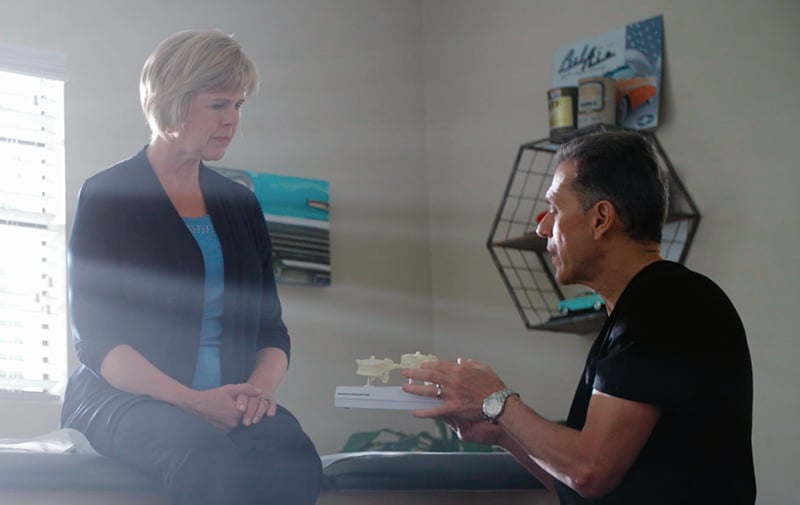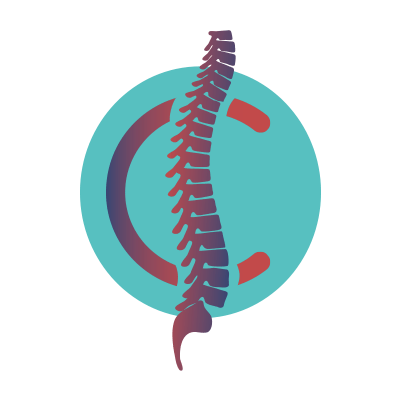Artificial Disc Replacement
Citrus Spine Institute specializes in cervical artificial disc replacements. Learn more about this surgery, the ways it can improve your quality of life, and how we can help you.

What Is Artificial Disc Replacement?
Artificial disc replacement (ADR), also known as intervertebral disc arthroplasty and total disc replacement (TDR), is a technique used to completely replace a damaged intervertebral disc. This procedure is designed to relieve compressed nerves, preserve and improve mobility, and reduce neck pain, numbness, and tingling.
At Citrus Spine Institute, we specialize in cervical artificial disc replacements, which are performed in the neck region of the spine as opposed to the lower back region of the spine.
Learn More About Cervical Artificial Disc Replacement
The discs between the bones and vertebrae of your cervical spine act as cushions and shock absorbers. These discs protect your vertebrae from impact and keep your spine stable yet flexible. Artificial disc replacement is used to treat degenerated or herniated discs and spinal stenosis – all of which can lead to compressed nerves.
Symptoms that may indicate you have one of the spinal pathologies above include:
- Chronic numbness, tingling and dull or sharp pain in your neck or between your shoulder blades
- Chronic numbness, tingling and pain that radiates into your upper extremities
- Weakness in your legs, arms, shoulders and hands
- Stiffness in your neck
- Headaches
- In severe cases, difficulty walking, balancing and incontinence
Since these symptoms are associated with other spinal conditions, it’s important to consult with a spinal specialist. They will be able to determine the exact cause of your symptoms and if artificial disc replacement is the right treatment for you.
Since cervical ADRs are performed using the anterior approach, you will lie face up, on your back for the procedure. Your surgical team will use general anesthesia to put you under and make the process painless.
Your spinal surgeon will make a one- to two-inch horizontal incision in the front of the neck, and remove the affected disc and any fragments through the front of the neck. The space between the vertebrae is restored to its original height and then, the artificial disc is placed in that space using fluoroscopy (live x-ray).
After it’s in place, the disc is then secured to the adjacent vertebrae and your incision is closed. Since this is an outpatient procedure, you will be taken to an observation room where your medical team will keep an eye on you for a few hours, until the anesthesia wears off.
Cervical artificial disc replacements can be quick. If you only need one disc replaced, these procedures typically take between 45 minutes to an hour. Your disc replacement may take longer if multiple discs need to be replaced.
Artificial disc replacements are a same day procedure, where you can expect to go home within a few hours post-surgery, with no overnight stay.
After your ADR, there are certain things you should do for a smooth recovery. To manage your pain, your doctor may prescribe pain medications for the first few days post-procedure, or recommend that you take over-the-counter pain medications. They may also prescribe a neck brace for extra support and stability.
After surgery, you will be restricted from:
- Lifting, pulling or pushing anything that weighs over five pounds
- Driving
- Strenuous physical activity
- Staying sedentary
- Over-extending your neck backward
- Swimming, taking a bath or any other activities that would submerge your incision in water
- Sleeping on your stomach
While you want to get plenty of rest, staying sedentary for too long can impede recovery. Take short walks throughout the day to encourage healing. As you recover, your healthcare provider will lift certain restrictions. They may also prescribe physical therapy to help you regain your strength, flexibility and range of motion.
Follow all instructions from your doctor and attend every follow-up and physical therapy appointment to ensure you’re making a healthy recovery. Always notify your healthcare provider of any changes you notice or issues you’re having as you recover.
Many people can resume daily activities one week after an ADR. A full recovery, where you can participate in more strenuous activities, can take between six to 12 weeks.
Throughout your recovery, you may notice some lingering discomfort or that certain movements and activities cause pain. It’s important to note that if your nerve compression was severe, your nerves may take one to two years to fully heal post-procedure.
Spinal surgery risks include excessive bleeding, infection, stroke, spinal fluid leak, blood clots, poor healing, nerve damage, reactions to medication and complications from anesthesia. Specific to ADR, risks include:
- Heterotopic ossification
- A broken or damaged artificial disc, which causes it to move or migrate
- A negative reaction to the metal in the artificial disc
- Prolonged pain, or failure to relieve it altogether
- Changes in your voice
- In rare instances, paralysis
After an ADR, it’s normal to feel pain and soreness in the front of your neck and around the incision. It may even be uncomfortable or difficult to talk and swallow for a period of time, however, this discomfort and pain will usually get better within a few days or weeks.

The Citrus Spine Difference
For us, the patient remains the king, in everything that we do.
01
02
Dr. Toumbis has received specialized training that enables him to safely and successfully perform cervical artificial disc replacements.
03
04
Our team has performed more than 10,000 successful surgeries, most of which utilize minimally invasive techniques. Our team has performed more than 10,000 successful surgeries, most of which utilize minimally invasive techniques.
What to Know Before Artificial Disc Replacement
From stopping the use of tobacco products to maintaining healthy diet and exercise habits, and more, there are a few things you should do to prepare for your ADR.
Your doctor will have specific recommendations and requirements for your spinal surgery preparation. Follow their instructions and be sure to notify them of any changes in your condition or overall health status in the days leading up to your procedure.
Wondering if an Artificial Disc Replacement Is What You Need?
The best way to find out if an artificial disc replacement is right for you is to talk to a spinal specialist. One of our experienced spinal specialists will work with you to come up with a proper diagnosis and a treatment plan that’s ideal for your unique condition. Schedule a consultation today to see if a cervical ADR is right for you.



